Tungsten carbide bushings معروفة بقوتها، صلابة, and long service life. They are widely used in pumps, compressors, turbines, and other rotating equipment.
But in real industrial environments, some bushings fail much earlier than expected. Early failure means unplanned downtime, higher maintenance costs, and possible damage to shafts or seals.
This article explains the main reasons behind premature failure and what decision-makers can do to prevent it.
Poor Raw Material Quality
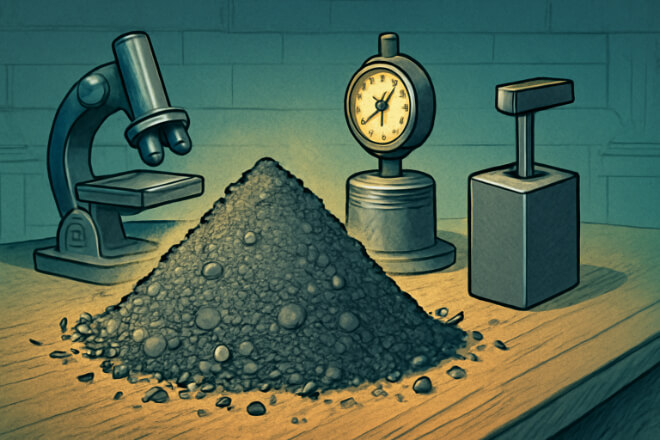
Not all tungsten carbide bushings are produced with the same material quality. Poor powder quality or incorrect binder ratios can significantly reduce strength and مقاومة التآكل.
1). Common Raw Material Problems
Low-purity مسحوق كربيد التنغستن
Incorrect cobalt or nickel binder percentage
Mixed grain sizes leading to weak microstructure
Contaminants such as oxygen or carbon imbalance
2). How This Leads to Early Failure
Weak bonding → chipping and breakage
Fast wear even under normal load
3). Typical Quality Checks
| Defect | Cause | Impact on Bushing | Risk Level |
|---|---|---|---|
| Low-purity powder | Poor powder refining | Weak microstructure, porosity | عالي |
| Wrong binder ratio | Inaccurate mixing | Low toughness or low hardness | عالي |
| Contamination | Dust, oxygen exposure | Cracks after sintering | واسطة |
Material defects are often invisible to the naked eye but directly impact long-term durability.
Incorrect Sintering or Manufacturing Defects
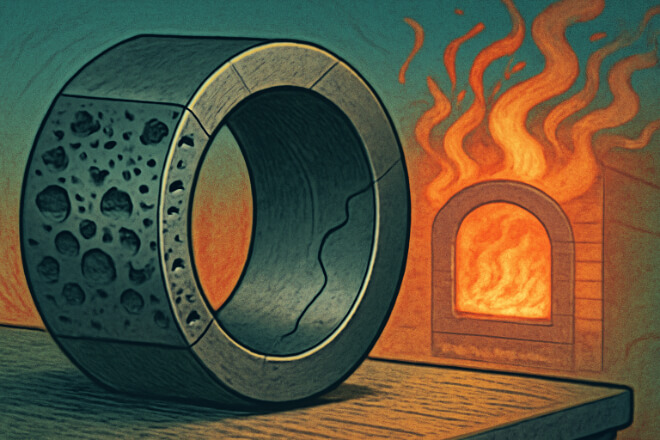
Even if the raw material is high quality, manufacturing problems can still lead to weak bushings.
1). Common Manufacturing Defects
Uneven كثافة during pressing
Poor sintering temperature control
Shrinkage issues
Voids caused by gas release
Internal cracks
These defects reduce structural strength, making the bushing fail when exposed to stress or vibration.
2). Why Sintering Matters
Tungsten carbide must be sintered at extremely high temperatures.
If parameters are not controlled:
3). Signs of Manufacturing Failure
Sudden cracking during installation
Chips around the chamfer area
Random breakage under normal load
Uneven wear pattern inside the bore
Misalignment Between Shaft and Bushing

One of the fastest ways to destroy a tungsten carbide bushing is misalignment. Even a small angle or offset between shaft and bushing creates extreme stress.
1). Causes of Misalignment
Poor pump or motor alignment
Bent shaft
Loose baseplate
Incorrect installation of bearings or seals
Thermal expansion differences
2). Effects on the Bushing
One-sided wear
Heavy friction on one area
Cracking along the inner wall
Vibration leading to fatigue
3). Typical Alignment Errors
| Misalignment Type | Cause | Bushing Damage | Risk Level |
|---|---|---|---|
| Angular misalignment | Motor/pump coupling error | One-side contact, heavy wear | عالي |
| Offset misalignment | Shifted shaft or housing | Inner wall cracking | عالي |
| Thermal misalignment | Expansion under high temperature | Surface scoring | واسطة |
Misalignment is a preventable failure mode but often overlooked.
Cavitation and Erosion Damage
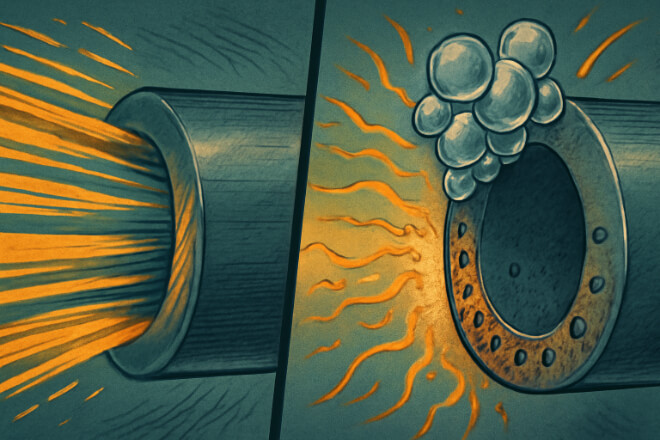
Tungsten carbide is hard, but cavitation and erosion can still wear it down quickly under the wrong conditions.
1). Cavitation
Low-pressure areas produce vapor bubbles. When these bubbles collapse, they hit the bushing surface with high energy, causing:
Pitting
Localized crater-like marks
Fast removal of material
2). Erosion
High-velocity fluids or particles (sand, rust, debris) strike the bushing surface repeatedly. This leads to:
Grooves
Smooth directional wear
Loss of thickness over time
3). Where This Happens Most Often
Pump inlets
High-flow areas
Pumps handling dirty or abrasive fluids
Chemical pumps operating at low NPSH
Rapid erosion or cavitation can destroy a bushing even when alignment and material quality are perfect.
Poor Lubrication or Dry Running
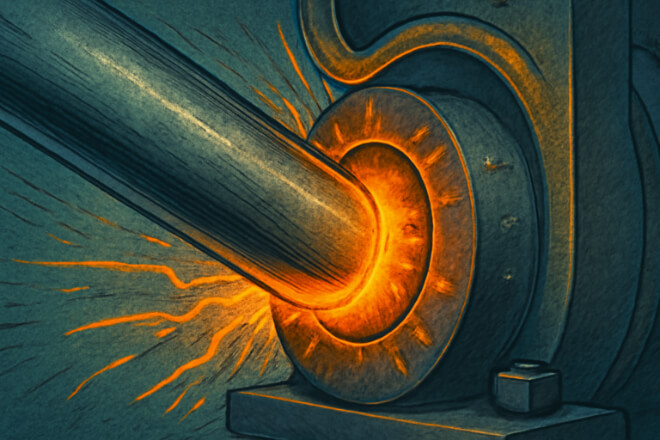
Tungsten carbide bushings depend on proper fluid lubrication.
If lubrication is poor or missing, the bushing will fail quickly due to heat and friction.
1). Common Lubrication Problems
Start-up without enough liquid
Blocked or restricted lubrication passages
Air pockets in the pump
Wrong type of process fluid
Low flow rate in vertical pumps
2). Effects of Poor Lubrication
ارتفاع درجة الحرارة
Surface scoring
Sudden cracking
Binding between bushing and shaft
Even the best carbide grade cannot survive dry running for long.
Incorrect Installation Practices
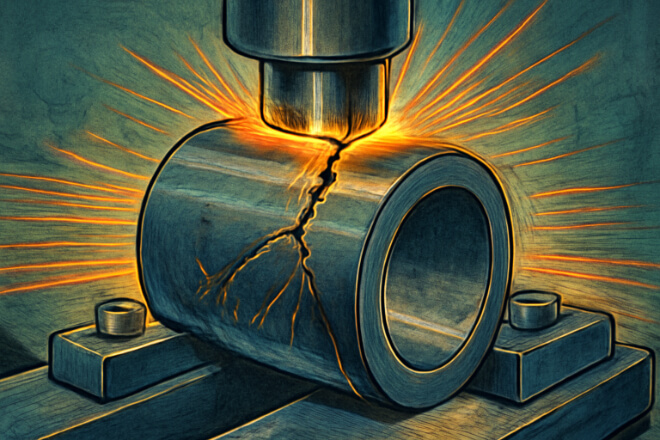
Incorrect installation is one of the most common reasons bushings fail early.
1). Typical Installation Errors
Using excessive force during press-fit
Hammering instead of using a press machine
Not checking the interference fit
Installing at an angle
Ignoring thermal expansion differences
2). Results of Wrong Installation
Cracked bushing during mounting
Chips around edges
Internal stress that causes failure later
A proper installation process is often the difference between a long-lasting bushing and one that fails within weeks.
Operating Conditions Outside Design Limits

Some pumps operate far beyond their original design limits.
1). Examples
Higher speed or pressure than expected
Unexpected dry solids in the fluid
Extreme operating temperatures
Strong chemical corrosion
Repeated start-stop cycles
2). How This Affects Bushings
Accelerated wear
Binder leaching
Thermal cracking
Structural fatigue
Using the wrong carbide grade for a specific chemical or temperature environment is a major cause of early failure.
خاتمة
Most premature tungsten carbide bushing failures come from a combination of material problems, misalignment, cavitation, installation mistakes, or harsh operating conditions.
By understanding these causes, decision-makers can prevent early failure, extend equipment life, and reduce downtime in pumps and other rotating systems.
إذا كنت تريد معرفة المزيد من التفاصيل حول أي شركة، فلا تتردد في اتصل بنا.
